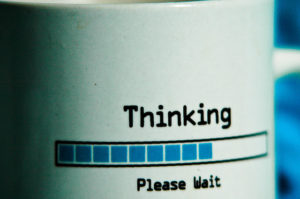One of the more enjoyable aspects of my work in the past year has been participation in a book study with local teachers and an administrator. The book, Rigorous Reading, written by Nancy Frey and Doug Fisher, served as an excellent common text for our group’s discussions about student literacy needs and about how to dive deeper into model teaching strategies. Teachers took turns leading the group, and each session engaged everyone in reflections on the text and sharing thoughtful connections about how to improve their practice.
The book study experience was such a contrast to the more rushed-agenda professional development we so often experience that I began wondering if we have gotten the collective notion that excellent work has to be difficult and maybe just a little painful. If so, the book study proved that notion inaccurate. Low risk, low stress meetings like these, focused on the kind of content that appeals to teachers, tapping into their experience, and allowing room and safety for reflection can result in a very organic learning and growth process for professionals at all levels.
 A growing amount of research supports teaching growth mindset to students and facilitating learning processes that guide them through “productive failure” in classrooms. One has to wonder whether teachers, themselves, have had enough of their own experiences in such a climate to feel secure in shifting their classrooms toward the kind of learning environments that value process as much as product.
A growing amount of research supports teaching growth mindset to students and facilitating learning processes that guide them through “productive failure” in classrooms. One has to wonder whether teachers, themselves, have had enough of their own experiences in such a climate to feel secure in shifting their classrooms toward the kind of learning environments that value process as much as product.
The old adage that teachers just want professional development that “gives them concrete things they can use” has too often meant skipping the big picture and the big questions, which we now know are the motivating factors in all learning.
Peter Senge, a long-time expert on learning organizations, explains succinctly why change occurs in spurts, stops, and starts: “While all people have the capacity to learn, the structures in which they have to function are often not conducive to reflection and engagement. Furthermore, people may lack the tools and guiding ideas to make sense of the situations they face. Organizations that are continually expanding their capacity to create their future require a fundamental shift of mind among their members.”
I have long advocated a shift in professional development of teachers toward a model that better recognizes the capacity they bring to the work, their desire to deepen their knowledge and fill in gaps, and learn from one another. But teachers won’t do this in a systemic way unless the structure to meet their needs is in place, as documented in this Edutopia blog by Lori Desautels. Although written with students in mind, we must remember that a true learning organization recognizes the needs of all of its members.
As Senge’s website points out, “Real learning gets to the heart of what it is to be human. We become able to re-create ourselves. This applies to both individuals and to organizations.” Wouldn’t it be an amazing cultural shift if teachers and other adults within a school truly felt that they are in the driving position of their organization and that there is prevalent support to meet their needs as they make change happen?
Giving learners more choice and voice in decision-making, allowing them to find alternate routes to solutions, and structuring work that allows them to build independence within reasonable standards and expectations is exactly what we know works with students. It also happens to be exactly what will build capacity in teachers to provide that learning environment for students. But are we allowing teachers the opportunity to build their own capacity in the areas we now expect them to cultivate with students?
If establishing a growth mindset journey for students is worthy of our professional development allocations, is it not then implicit that we recognize its role in adult learning as well? As Senge points out, “people with a high level of personal mastery are acutely aware of their ignorance, their incompetence, their growth areas. And they are deeply self-confident. Paradoxical? Only for those who do not see the ‘journey is the reward’.”
For more information about how CTL can help your school, click here.

